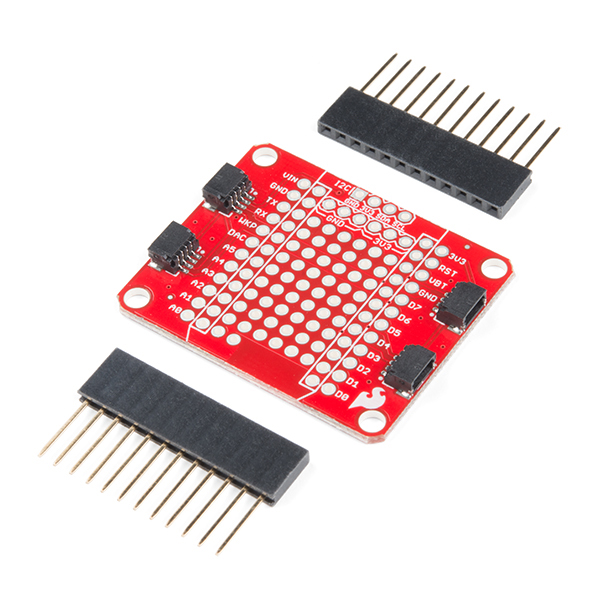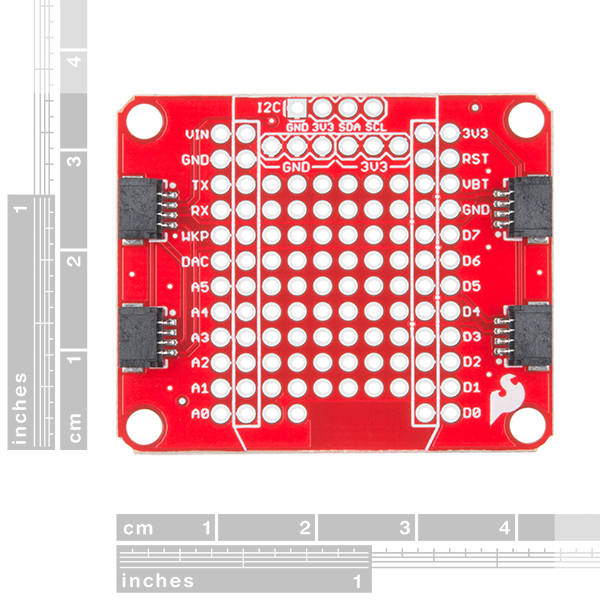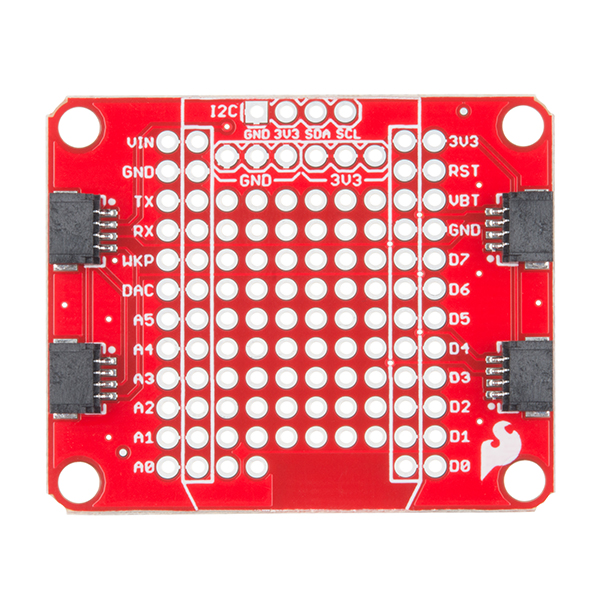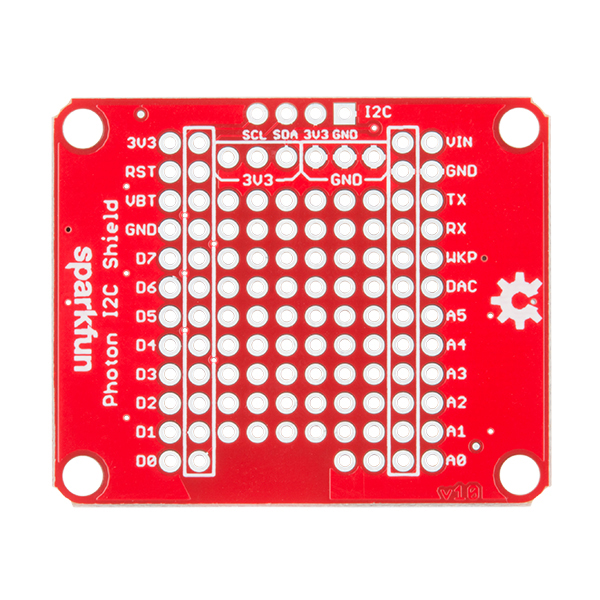SparkFun Qwiic Shield for Photon
The SparkFun Qwiic Shield for Photon is an easy-to-assemble board that provides a simple way to incorporate the Qwiic Connect System with your Particle Photon. This shield connects the I2C bus on your Photon to a series of SparkFun Qwiic connectors. As long as your devices are on different addresses, the Qwiic system allows for daisy chaining, meaning you can stack as many sensors as you’d like to create a tower of sensing power!
The Qwiic Shield has four Qwiic connection ports, all on the same I2C bus, as well as a small prototyping area to design and make your own unique circuits. The shield is also equipped with 3-pin buses for ground and 3.3V to help with prototyping.
Note: This shield includes Photon stackable headers, but they are not pre-soldered onto the board, so some assembly will be required when putting the shield together.
The SparkFun Qwiic Connect System is an ecosystem of I2C sensors, actuators, shields and cables that make prototyping faster and less prone to error. All Qwiic-enabled boards use a common 1mm pitch, 4-pin JST connector. This reduces the amount of required PCB space, and polarized connections mean you can’t hook it up wrong.
- 1x SparkFun Qwiic Shield for Photon
- 2x Photon Stackable Header, 12-pin
- 4x Qwiic Connection Ports
- Small Prototyping Area
- 3.3V and GND Buses
SparkFun Qwiic Shield for Photon Product Help and Resources
Qwiic Shield for Arduino & Photon Hookup Guide
October 19, 2017
Get started with our Qwiic ecosystem with the Qwiic shield for Arduino or Photon.
Qwiic Magnetometer (MLX90393) Hookup Guide
May 3, 2018
Figure out how magnetic fields are oriented, all without having to solder a thing.
Core Skill: Soldering
This skill defines how difficult the soldering is on a particular product. It might be a couple simple solder joints, or require special reflow tools.
Skill Level: Noob - Some basic soldering is required, but it is limited to a just a few pins, basic through-hole soldering, and couple (if any) polarized components. A basic soldering iron is all you should need.
See all skill levels
Comments
Looking for answers to technical questions?
We welcome your comments and suggestions below. However, if you are looking for solutions to technical questions please see our Technical Assistance page.
Customer Reviews
No reviews yet.





